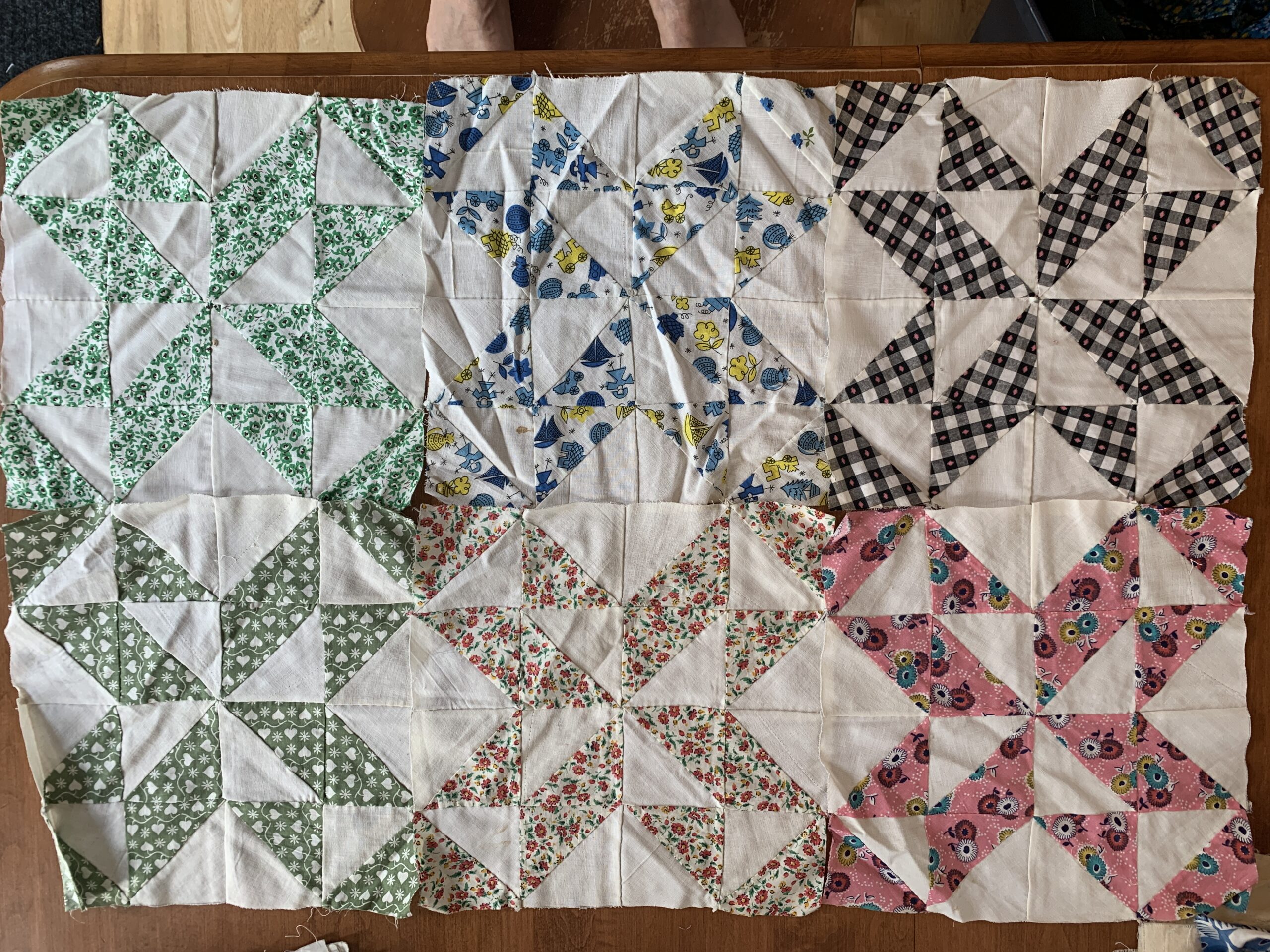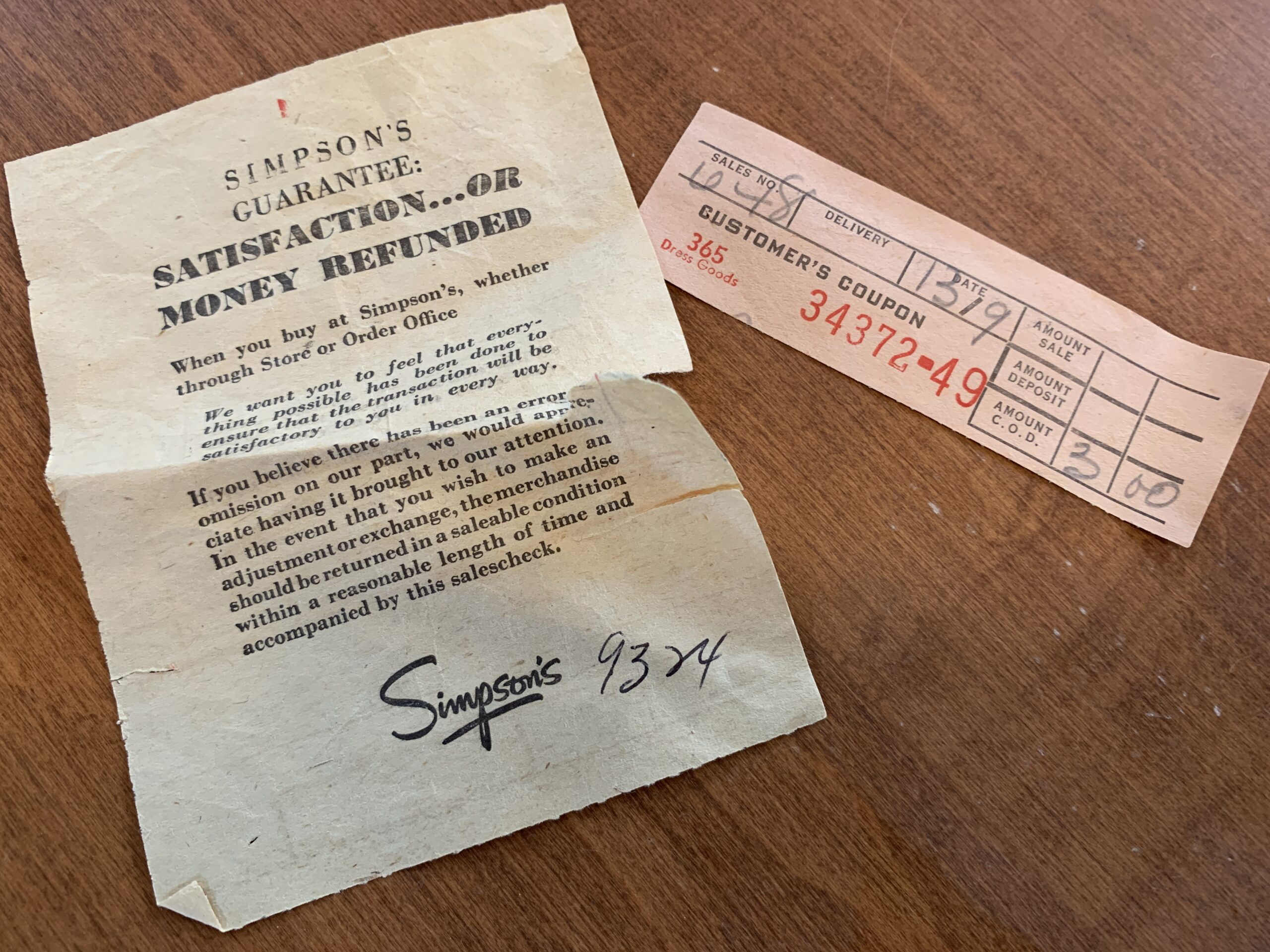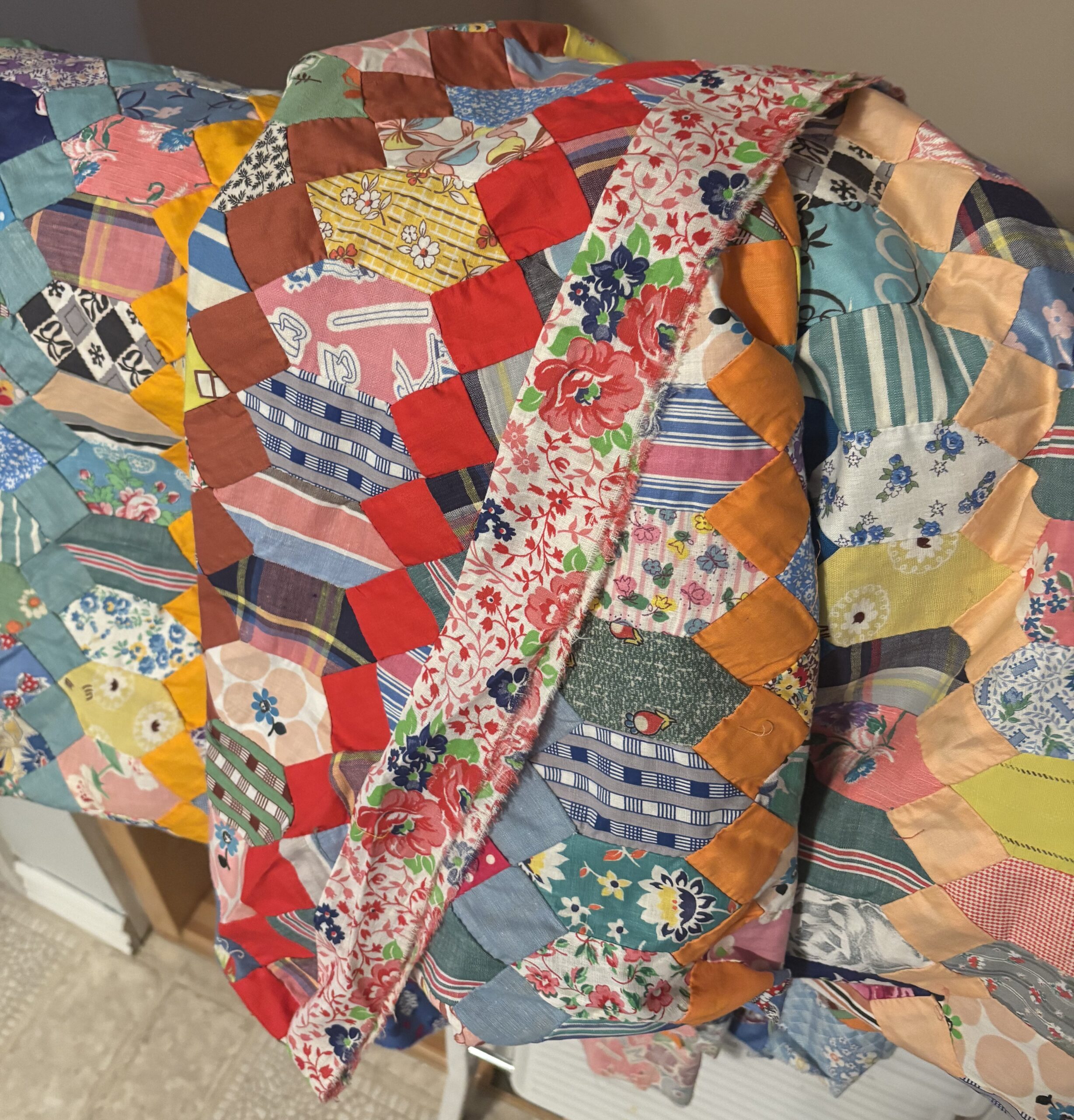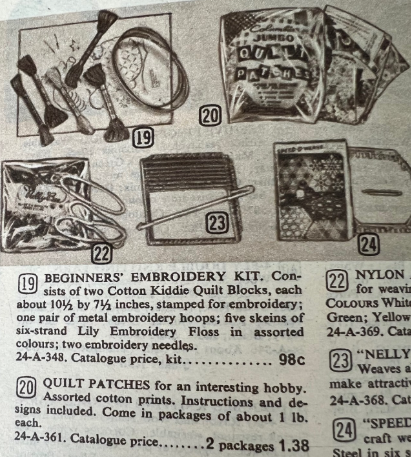In 2011, Sarah Bass was visiting with her great-aunt Donna Carswell in Campbellford, Ontario when she received three bags of scraps arising from Eaton’s and Simpsons department stores. That led to a cross-country investigation into this barely documented phenomenon.

In Sarah’s kitchen, a bag overflowed with sights of paisley, bright flowers, polka dots and checkered patterns. She dug into it as if seeking treasure.
“The fabric has a different texture,” she said. “It’s like putting your hands in history and going back to that time. It’s immersive. It has that vintage smell to it of fabric stored away for a long time.”
Piles of half-sewn pieces and quilts covered her table as she showed the scope of her great-grandmother Eva Carswell’s collection.
“Donna told me that many of her quilts were made from scraps left over from dresses made by Eaton’s and Simpsons,” Sarah said. “She said that women wrote in and asked for scraps and received them for free.”
Sarah took the bags home and sorted everything. Ultimately, she discovered eight quilts in progress and enough material to make many more.
“I didn’t know Eva since she died in 1988 when I was quite young,” she said. “My dad remembers her hand-sewing in her chair. I imagine she was making these quilts with family in mind. I’m quite literally picking up the threads.”
Sarah wanted to know more about the origins of the fabric from Eaton’s and Simpsons stores. Once she reached out to a network of quilters and historians, the story took on a whole new life.
Eaton’s and Simpsons quilts history
The T. Eaton Company operated a huge department store chain that ran from 1909 until 1999. By 1930, it controlled almost 60 percent of all department store sales in Canada.
Meanwhile, Simpsons, later bought out by Sears, had a handle on a large portion of the rest of it. Both dominated retail by issuing huge catalogues that captivated shoppers of all ages. Well into the 2000s, both chains still had fabric departments in some of their stores.
However, by 1997, poor management had eroded Eaton’s market share down to 10.6 percent. Two years later, Sears Canada purchased its shares, eight of its stores and all of its names, trademarks, brands, and website in a $30-million deal.
Sears would only survive until 2017 when its stores folded at the end of that year. At the time, both loomed large as major retailers of clothes, toys and household goods. Memories from those times live on vividly in many Canadians.

Back in Sarah’s kitchen, she wondered why they would give away so much. In one bag, she found a receipt for $3. Did this cover shipping? Without any further records, she simply didn’t know.
An online search only surfaced one reference cited in a blog entitled Overall history of quilting in Canada by Jess Speir.
“The Great Depression hit in 1933, and with the economic hardship, quilting became a necessity again for many families. Quilts made at this time were scrappier, and tended to be pieced rather than appliquéd, because fabric was a scarcer resource,” she wrote.
“Quilt kits increased in popularity, and department stores like Eaton’s and Simpsons sold bundles of material specifically to be used for quilt patches,” she added.
When Sears folded, its corporate records went to the National Library and Archives of Canada. However, there is no mention of this program.
Stymied, CQA/ACC shared Sarah’s quest via a blog and social media posts. Then, new leads started flowing in.

Another company did this too
In Medicine Hat, Alberta, Pam Robertson Rivet recognized some of the fabrics from two unfinished quilt tops she bought at a fabric sale fundraiser last year.
“They look to be made of the same fabrics and use the same shaped blocks as the quilt that Sarah is holding,” she said.
She has seen newspaper clippings that describe fabric provided by Eaton’s and the Great Western Garment Company (GWG) to quilters within Women’s Institutes and Red Cross units in Alberta during the Second World War.
“From what I have read, the GWG fabrics were distributed widely in Alberta (from its plant in Edmonton) and Eaton’s in Manitoba and Ontario.”
GWG was founded by Alexander Rutherford (Alberta’s first premier) and his business partner Charles Graham in 1911. They started in denim, made uniforms for Canadian soldiers in both world wars, then expanded to Saskatoon, Winnipeg and Brantford. They were eventually bought by Levi Strauss jeans and, as garment making was outsourced, closed all locations by the early 2000s.
Pam and other quilters suggested several contacts within Canadian museums. That led to more revelations.

Historians weigh in
The Canadian Museum of History has a sporadic collection of Eaton’s catalogues from the 1880s to the 1950s. From the ones reviewed, there was no centralized program for fabric scraps.
Based on conversations with researchers, Eaton’s employees may have decided to reward customers with offcuts for shopping there or as a “gift with purchase,” which could explain the receipt found in Sarah’s bag.
They suspect that this was not an advertised or centralized program, but something done ad-hoc by individual Eaton’s stores when they had extra scraps.
The Royal Ontario Museum has a few Simpson catalogues from 1899 to 1965 and from Eaton’s from 1887 to 1975. Former curator Adrienne Hood found one reference in a 1962 catalogue she had at home.
“I wouldn’t be surprised that Eaton’s was selling scraps for quilts as there were fabric and thread companies that were selling quilt kits in the 19th century, especially for crazy quilts,” she wrote in an email.

In the photo she provided, the store sold one-pound bags of fabric with instructions and designs for quilts.
“Whether or not they were giving them away earlier is likely researchable, but it was clearly a long-standing practice,” she added.
Sarah delighted at the idea of an underground quilt trade run by practical women. For now, she is focused on carrying on her great-grandmother’s tradition.
“I want to make these into gifts for my cousins so they have something historic,” Sarah said. “When you make quilts, it’s like you’re imbuing your love into something that someone can hug. It’s meant to give you that sense of family. It may be fifty years before I finish it all.”


